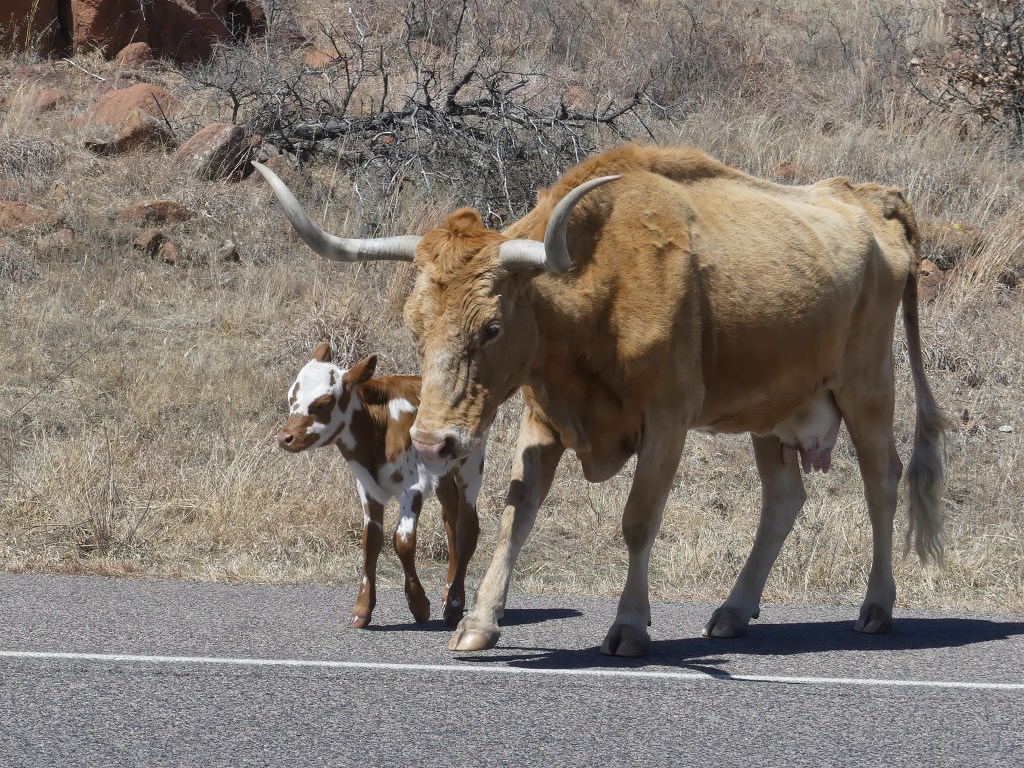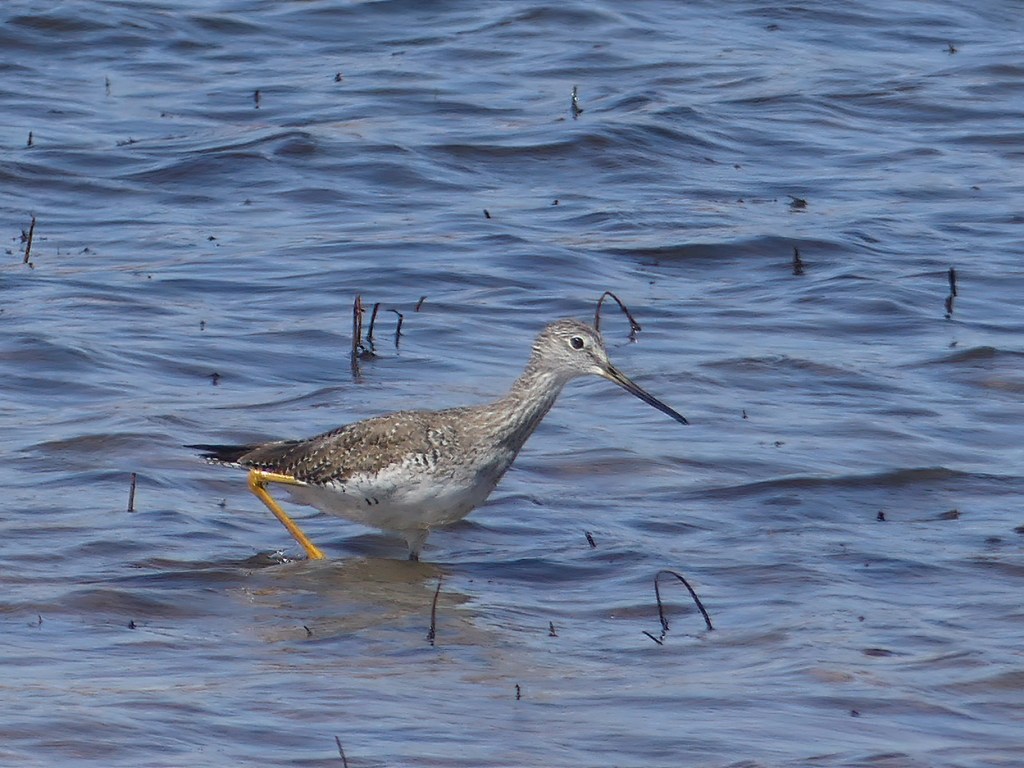Life has kept me busy recently. It’s hard to believe that our Utah trip was three months ago. Finally, here is the rest of the story – my drive back to North Carolina. After dropping David at the Albuquerque airport, I wanted to stay close until his plane was airborne, so I chose an easy place to see lots of birds – Tingley Lagoon, part of ABQ BioPark. Well, there were lots of ducks, but I like ducks. There were also cormorants that breed on the little islands in the middle of the ponds – both Double-crested and Neotropic – but my photos all seem to show Neotropic Cormorants.

Here are a few other birds from this spot, a female Common Merganser, male Northern Pintail, American Coot, and Canada Goose.





After a pleasant hour at the Tingley Lagoons, it was time to head east. I got one more “life” New Mexico bird at the Pajarito rest area – a Chihuahuan Raven that I was able to identify only because I noticed its call sounded different from Common Raven and I recorded it.
At another rest area near Santa Rosa, I saw the Cholla on the right. Then I drove on into Texas where I spent the night.
The next morning, I found one more Texas life bird, Western Meadowlark, at the Donley County US 287 Safety Rest Area. I got photos of a meadowlark that was satisfactory for identification, but this Eurasian Collared-Dove was much more photogenic.

My major stops on the way back to NC were both in Oklahoma, first Wichita Mountains Wildlife Refuge. It is a major birding hotspot, but is more well-known for its other wildlife, notably the bison, longhorn, and elk that roam the park’s 59,000 acres.

Nearly 100 years ago, a herd of Longhorn was established at Wichita Mountains Wildlife Refuge to save the breed from extinction. Here is a detailed accounting of the story. Apparently, there are current debates about whether or not cattle belong on a wildlife refuge, but they are beautiful and I’d guess the desire to see these creatures contributes to making this one of the most visited wildlife refuges in the county.



The refuge also has several prairie dog towns and I never tire of these cute rodents. Did you know that they are related to squirrels and chipmunks? Yes, they are all in the family Scuiridae. These were black-tailed prairie dogs, the only one that I think I’ve seen of the five prairie dog species in North America.

I did see a few birds, too, like the Greater Yellowlegs below, although I’m sure there would have been many more birds later in the year.

My favorite bird at Wichita Mountains was a single Ring-billed Gull proudly standing in the middle of a prairie dog town on the side of the road.

The next day I toured another wildlife refuge, Sequoyah NWR, near Oklahoma’s eastern border with Arkansas. I received a nice welcome from a flock of about 40 American White Pelicans that flew over as I drove into the park. This refuge had only a fraction of the visitors of Wichita Mountains on the day I visited. However, I met a couple of birders at the entrance kiosk and we birded a lovely path in the woods together. The rest of the refuge was mostly open and the next birds I saw were a large flock of Snow Geese.

It was interesting to see so many dark morph birds in the group. Snow Geese winter on the coast of North Carolina, but we rarely see a “Blue Goose” here.

In addition to birds, I saw a new and interesting turtle. Unfortunately, I focused my camera on the wrong one, the larger pond slider, a common and widespread species that I’ve seen many times. After submitting it to iNaturalist, I learned that the turtle on the right is an Ouachita Map Turtle. It is not rare either, but its range is the south-central part of the US and I’d never seen one before. And, what a cool name!

I saw about 35 species of birds at Sequoyah, mostly the same species that I can see in North Carolina. My last bird there was a Bald Eagle that flew over a pond filled with ducks and then landed in a tree by the road. I enjoyed the hours I spent at this refuge and would love to visit again.

After Sequoyah, all that was left was the uneventful drive to North Carolina. This was definitely my least birdy road trip ever, but I did manage to get both my Oklahoma and New Mexico lists to over 50 species. I also added several new counties even though you can drive for miles and miles in the West and see nothing. The map below shows every county in which I have observed birds. Good county birders have maps with clear, continuous lines representing travels. My maps look like an advanced version of connect-the-dots, but I try.

But more important than the birds was the amazing landscape that David and I saw in Utah and the fun we had exploring that part of our country. Visiting Arches and Canyonlands National Parks and Dead Horse Point State Park made this a trip of a lifetime.




